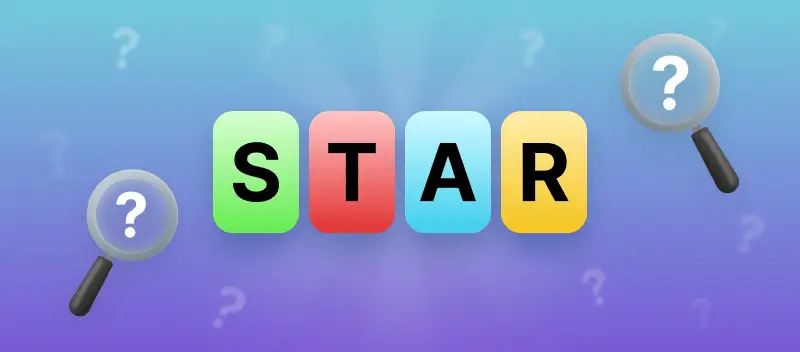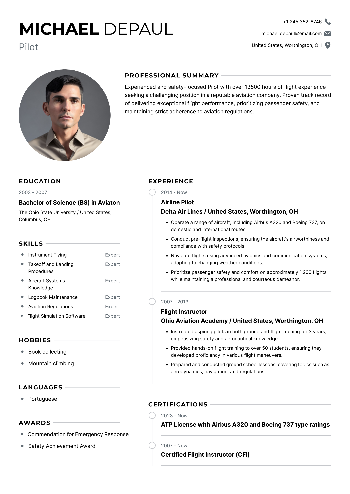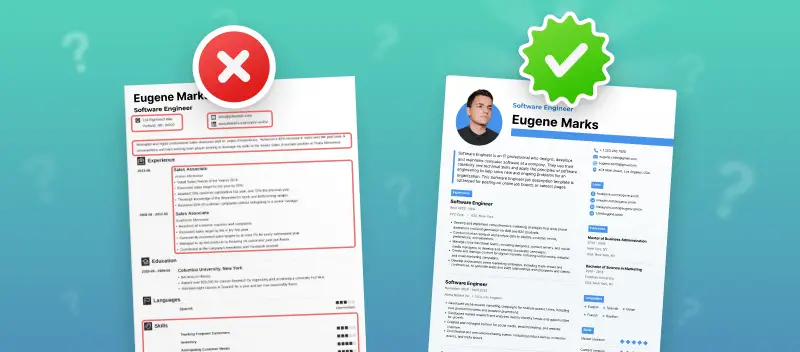Recruiters typically make use of the STAR method interview to better evaluate potential hires. The use of the STAR technique helps both the candidate and the hiring manager to articulate past experience in a systematic way.
It gives the employer a better understanding of the skills and abilities that you are highlighting in your resume.
Resume examples to land an interview:
In this article, we are going to take a closer look at how it works, explain some of the questions, and learn how to use this method successfully.
Create your professional Resume in 10 minutes for FREE
Build My Resume
What is the STAR Method
The STAR format can be used to answer questions about past behavior. It stands for Situation, Task, Action, Result and provides a structured approach to answering behavioral and competency-based questions.
According to the Society for Human Resource Management (SHRM), 65% of job seekers fail to sufficiently emphasize their accomplishments during interviews, which the STAR method helps address.
Understanding the STAR method will help you answer questions with more depth and detail, making it easier for your interviewer to assess your skills and experience.
The STAR interview technique is designed to help competitors reply to challenging behavioral interview questions in a clear and concise way. The head hunter can find out how the candidate faced a particular problem, what actions they took, and the results.
This aids employers in acquiring a complete grasp of candidates' behavior in real-world scenarios and what value they could bring to their organization.
The STAR method supports employers in understanding how the individual would deal with similar circumstances in their job if employed.
It facilitates job seekers to highlight their achievements, showcase their problem-solving skills, and demonstrate their ability to work under pressure.
STAR Method in Four Steps
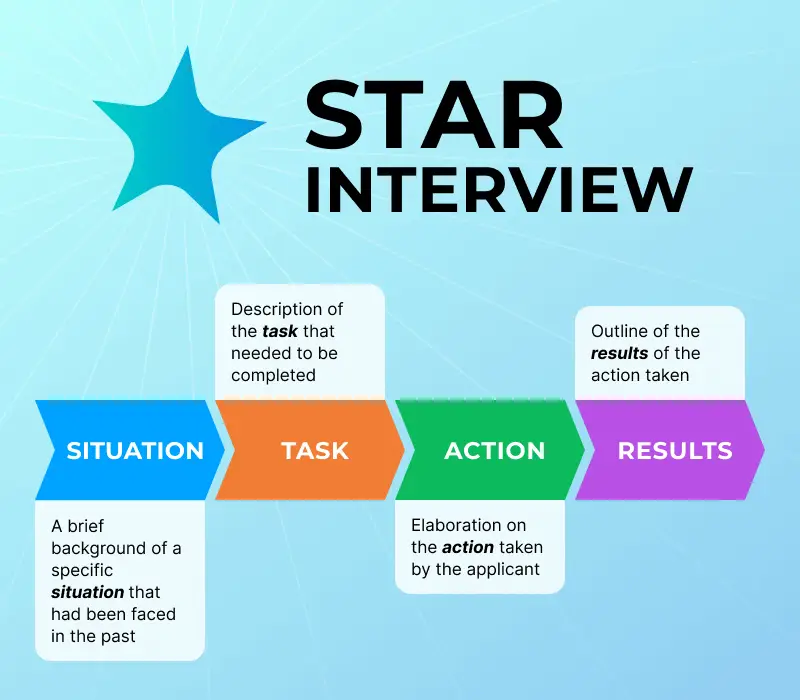
- The first step of the method is to describe the situation you were in. Detail the participants in the situation, as well as their respective responsibilities.
- The second step entails outlining the task or challenge you faced in that situation. Ensure that you include what your role was with any other details.
- The third step is to explain the actions you took to address the challenge or task. Clarify decisions that you made, actions you took, or strategies you employed.
- Finally, define what result your actions had. Describe how successful your choices were and the outcomes they achieved. Confirm to include successes or accomplishments.
By taking these four steps, you can effectively address behavioral interview questions during an interview with the help of the STAR system.
This can help you demonstrate your unique experiences and qualifications for the role, giving you an advantage in the hiring process.
Questions to Get Ready
Here are key behavioral interview questions to ask yourself when implementing the STAR interviewing:
Questions:
- What was the context of the situation?
- What did you do in this situation?
- How did you take action to resolve the situation?
- What were the outcomes of your activities?
- What is the main conclusion drawn from this situation?
- What challenges or obstacles did you face during this experience?
- Which skills or strengths did you apply to handle the situation?
- How did this experience contribute to your professional growth or learning?
Assure to present detailed examples when addressing these questions and zero in on spotlighting how you have had an effect. With some thoughtful preparation, employing the STAR method, help you to shine during your next job interview!
Research conducted by Harvard Business Review indicates that using the STAR method during an interview can increase the perception of a candidate's competency by up to 30%.
Preparation for STAR Method Interviews
Being aware of STAR approach is a great way to stand out in an interview. It allows you to answer questions in a structured, mindful way that can really make a good impression on employers.
But, how exactly to get ready to use this technique? Look at the tips:
- Research. Before your interview, spend adequate time studying the company, the position you're applying for, and any relevant industry topics. This will help you devise strong examples to illustrate your points.
- Practice. Once you have an idea of what the interviewer might ask, rehearse responding to their questions using the STAR Response out loud. This will get your brain used to thinking in terms of the situation, task, action, and result structure. You'll find it easier to respond spontaneously.
- Organize Your Thoughts. As you run through the STAR Method, take note of stories or examples that come up. Recording them will help maintain order so you may recall them during your real interview.
- Focus on Results. When addressing behavioral interview questions utilizing the STAR system, concentrate on outcomes. Describe what you did and how it resulted in a positive outcome for either yourself or someone else. This will really emphasize your value as a potential employee.
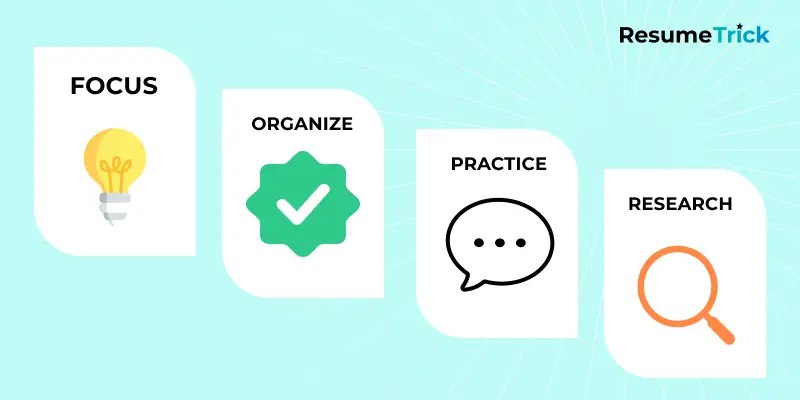
Applying the STAR method may have a huge impact on an interview. If you have these goals and take the time to train them beforehand, you'll have a head start. This shows employers that you're prepared and organized.
30 Samples of STAR Interview Questions
The Situation-Task-Action-Result approach is a widely utilized tool employed by recruiters to assess how job applicants respond to tough and demanding questions. STAR behavioral interview questions that you can expect for your upcoming interview:
- Relate an experience when you were forced to adjust to changes over which you had no control.
- Describe a situation in which you had to think outside the box to resolve a problem.
- Describe the most complex project you have worked on and how you handled it.
- Describe an occasion when you juggled multiple responsibilities simultaneously.
- Provide an example of when you had to show initiative and lead in resolving an occasion.
- Describe a case where you foresaw potential issues and took action to avert them.
- How did you react when your work was criticized by your supervisor or senior colleague?
- Disclose the most successful team project you were a part of and why it achieved success?
- Clear up a scenario in which your result was not accepted due to low quality and your reaction?
- Describe circumstances where you employed your negotiation techniques to achieve an understanding with another party?
- How did you deal with an unexpected setback while working on a project?
- How have you persuaded someone else's opinion on a significant issue?
- Reflect on an illustration where your technique required further refinement and what actions were taken?
- How did you go about learning something new that was necessary for completing a project successfully?
- Talk about a period when your communication skills helped prevent a conflict from escalating further?
- Describe where your creativity was used to solve an issue?
- What was the most difficult decision, and your ways to handle it?
- Explain a sample where you had difficulty getting along with someone on the team, and how did you overcome it?
- Share with us the most complicated customer service experience that you have ever encountered?
- Describe an instance in which your persistence paid off despite initial resistance from others?
- How do you handle working under pressure or tight deadlines?
- Expound on an instance where your knowledge or skills were tested in the workplace, and how did it turn out?
- Describe a scenario where your analytical abilities assisted in recognizing possible issues or risks?
- Give us an example of a time when your leadership qualities enabled others on the team to succeed?
- Clarify how your research skills helped find new solutions or approaches for completing projects successfully?
- Tell us about a time when you had to adapt your communication style to suit different audiences.
- Describe an occasion where you managed a conflict between team members and what the result was.
- Share an example of when you had to learn a new technology or tool quickly to meet a project deadline.
- Explain a situation where you identified an opportunity for improvement and took steps to implement it.
- Discuss a time when you received constructive feedback and how you applied it to enhance your performance.
More Tips for STAR Interview Answers
The STAR method is an effective way to supply interviewers with a clear and concise reply to their questions. Here are a few extra pointers to help you improve your next STAR interview:
- Plan ahead. Look at the job description and anticipate likely questions related to your experience and skills. Prepare stories that clearly demonstrate each of the four components of the STAR Technique Interview.
- Be specific. Provide specific details when describing each component of your story. Avoid generalities such as "I did a great job" or "It was successful"; instead, give concrete numbers, results, and outcomes.
- Keep it relevant. Make sure the histories you tell are applicable to the job you are applying for. Tie each story back to the skills and experience needed for the role.
- Stay positive. Even if the situation you describe was challenging or unsuccessful, focus on what you learned from it and how it made you a better employee.
Heeding these employment and job search tips will guarantee that you will leave a positive impression during your upcoming STAR appointment!
According to a survey by Robert Half, 80% of hiring managers prefer candidates who provide specific examples of how they resolved challenges using the STAR method.
STAR Method Examples
It is important to have a strategy in place. The STAR Method of Interviewing serves as a useful tool for constructing responses to behavioral questions.
Here are the examples of STAR interview questions and answers.
STAR Question 1:
Describe a time you had to make an important decision.
Situation: I was working as a software engineer at a tech startup. We were developing a new product and needed to decide if we should use existing technology or develop something in-house.
Task: My duty was to research the available technologies and make an informed decision.
Action: I read up on the options and got input from other engineers in the company. I also consulted with our customers to ascertain which option they preferred.
Result: We decided to take an existing one as it was more cost-effective and efficient. The product was released on time and it was well-received by our customers.

STAR Question 2:
Tell us about a project you managed successfully.
Situation: I was managing a team of 10 software engineers working on an enterprise project. The goal was to create a web application for our client's business needs.
Task: My assignment was to coordinate all aspects of the project, from development to testing and deployment.
Action: I created detailed plans for each phase and then assigned tasks to members of the team accordingly. I organized regular meetings with the people I work with. This allowed us to stay on track, discuss problems, and make changes where necessary.
Result: The application was finished punctually and within the allocated budget. Our client was happy with the results and our team received positive feedback from them.

STAR Question 3:
Relate a situation when you had to take a vital decision.
Write a Resume to Get InterviewSituation: I had been a project manager for six months. My team was facing a problem with a client who was not satisfied with our work.
Task: My aim was to generate a scheme to resolve the issue while maintaining a positive relationship with the client.
Action: I held a meeting with my team to brainstorm possible solutions. After that, I gathered feedback and reviewed it carefully. Based on this feedback, I developed a plan of action and presented it.
Result: The client was pleased with the suggestion and we successfully resolved their issue without damaging the relationship.
STAR Question 4:
Illustrate an experience when you functioned in a trying team setting.
Situation: I was part of a team tasked with building an e-commerce website for our company.
Task: My task was to collaborate with the rest of the team in order to create an effective website design.
Action: I realized that some of the members didn't have web design experience. So I took the lead in creating wireframes for each page of the site. I then shared these wireframes with a team and asked for their feedback and ideas.
Result: By working together, we succeeded in building an attractive and user-friendly website that fulfilled all of our client's needs.

STAR Question 5:
Share a story of a moral quandary you faced at work.
Situation: I was working as an accountant for a large company. There was pressure from upper management to alter financial statements to meet certain shareholder targets.
Task: My duty was to determine how best to approach this ethical dilemma in order to protect both my job security and the company's reputation.
Action: After careful consideration, I decided it would be best to refuse to participate in an activity involving financial statement manipulation or immorality.
To verify that my decision would be respected, I documented my position on paper. I sent it directly to management, along with my letter of resignation, if necessary.
Result: My stance on ethics was respected by the directors. No further attempts were made by them to manipulate financial statements or engage in other unethical practices.

STAR Question 6:
Describe a situation when you were obliged to make an unpopular selection at work.
Situation: I was an appointed department head at my workplace. However, some employees were resistant to change and did not accept me as their leader.
Task: My mission was to make decisions that would benefit the department despite resistance from certain members of staff.
Action: To ensure that everyone accepted my choices, I held regular meetings where all staff could contribute their ideas and opinions on proposed changes. This gave me the opportunity to receive feedback from anyone involved before making conclusions.
Result: By involving everyone in the decision-making process, I was able to successfully implement new policies that ultimately benefited the department. I also increased the acceptance of my leadership among all employees.

STAR Question 7:
Describe a time when you had overcome an obstacle.
Situation: I had been toiling away at creating an app for our company's product launch but faced technical issues which caused delays in progress.
Task: My duty was to find ways around these obstacles in order to attain our deadline for launching the product.
Action: After researching possible solutions online, I contacted experts who specialize in this area. They advised me on the most efficient way to resolve these issues quickly without compromising the quality or functionality of the app.
Result: With the help of experts and additional exploration, we were able to launch our product within two months. We did not sacrifice performance or usability.
A study by Glassdoor showed that candidates who effectively use the STAR method during interviews are more likely to receive job offers compared to those who don't, with a success rate of up to 65%.
Create your professional Resume in 10 minutes for FREE
Build My Resume
STAR Method for Group Interviews
The STAR format can be just as effective in group interviews or panel settings, though these formats come with unique challenges. When multiple interviewers are present, or you're part of a group of candidates, the way you present your answers needs to be slightly adjusted.
Panel interviews often involve interviewers from different departments or with varied areas of expertise. Tailor your answers to address what each panelist might be looking for.
For example:
- If an HR representative is present, highlight teamwork, communication, or conflict resolution.
- For a technical lead, focus more on the specific actions and problem-solving aspects of your story.
It’s important to maintain eye contact and engage with everyone, not just the person asking the question. As you deliver your STAR response, glance around the room to involve each member of the panel.
If you're in a group interview with other candidates, it’s possible you may be asked to demonstrate your teamwork or collaboration skills on the spot. In such scenarios, you can use the STAR method to explain how you worked with a team in the past to achieve a common goal.
Speaking in front of a group of interviewers can be nerve-wracking. Practice beforehand to ensure your responses come across confidently and clearly.
The STAR Interview Method: To Sum Up
The STAR format is a powerful tool for constructing answers to questions about past behaviors. Along with a great resume and cover letter, it can help you land the job of your dreams.
STAR method offers a comprehensive approach to responding to such questions. It provides a framework for candidates to give meaningful replies that accurately reflect their experiences.
This method is useful when preparing for any kind of job interview, yet, it is particularly beneficial when applied to behavioral interviews.
Remember that it is critical to bear in mind that the STAR approach is not designed to issue canned responses. Instead, it's meant to help you think through potential questions and generate well-crafted answers that showcase your skills and experiences.
By mastering the STAR technique, you can be confident that you're putting your best foot forward and making a great impression on prospective employers. With some practice, you'll be able to use the STAR method effectively and confidently.
FAQ
- How long should my response be?
- Aim for about 1-2 minutes per answer (around 10-12 sentences). Be concise but thorough in covering each aspect of the STAR framework. The "action" part should take the most time, around 40-60 seconds (3-4 sentences).
- Can I use examples from non-work experiences?
- Yes, you can use situations from volunteer work, school projects, or personal background, especially if you lack extensive professional experience.
- How to avoid sounding rehearsed?
- Practice your stories, but keep your responses flexible. Focus on key points rather than memorizing a script.
- Can I use the STAR approach for my questions to the interviewer?
- You can use elements of the STAR method to frame your questions, such as asking about specific challenges the team has faced and what actions led to successful outcomes.
- Are there types of questions where the STAR method is less effective?
- For hypothetical or opinion-based questions, you may need to adapt or use other approaches.
